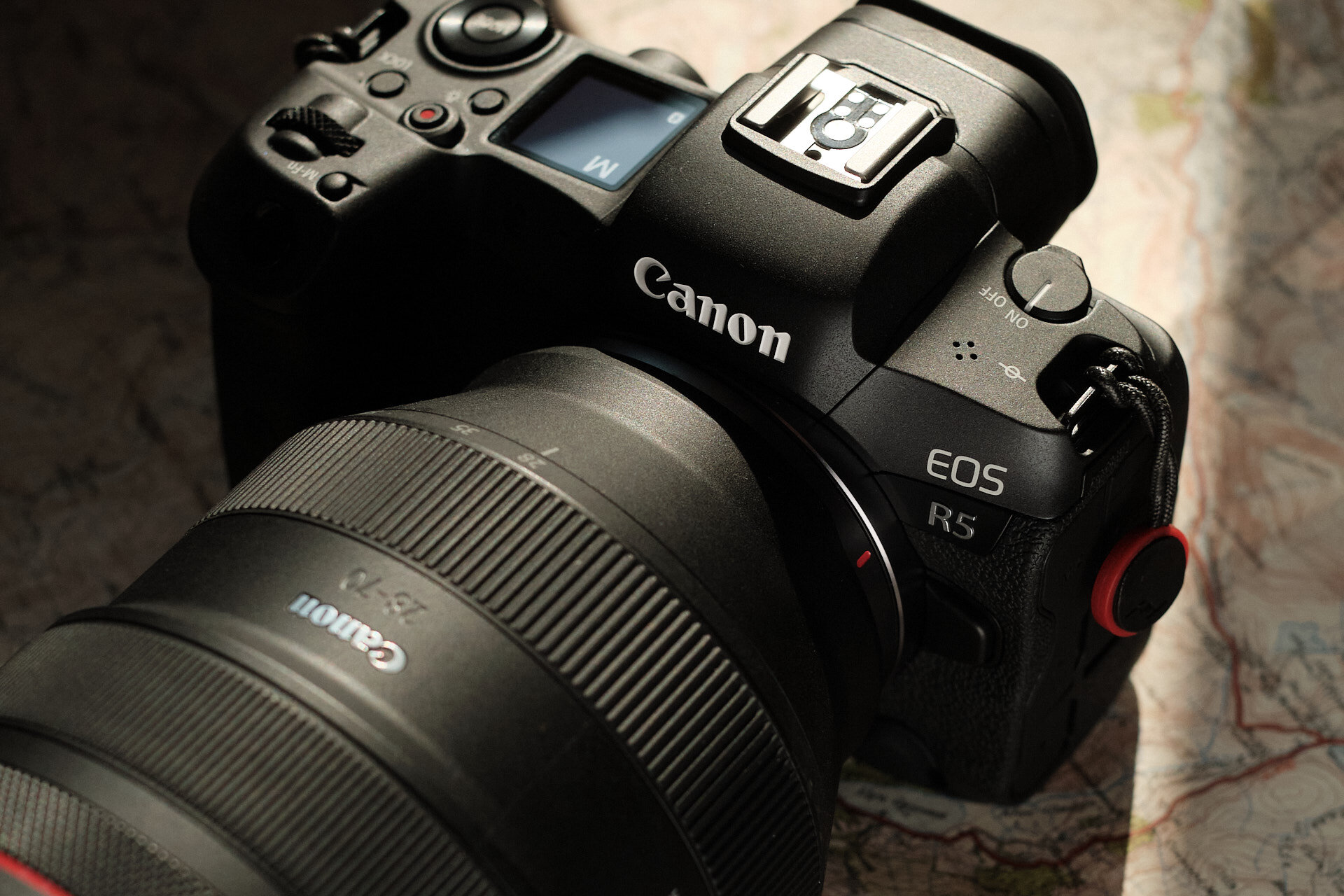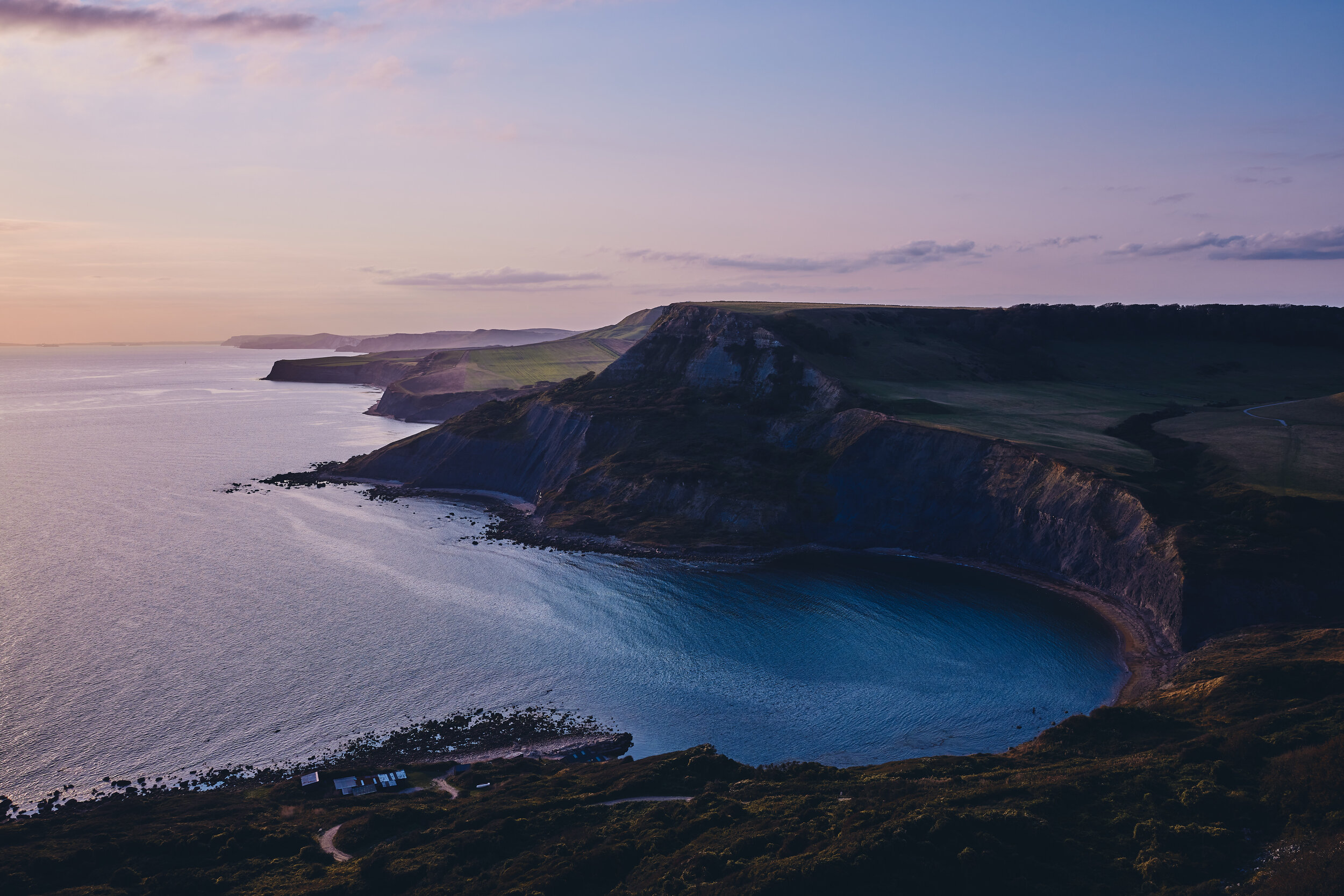First things first, this is not a review. There are plenty of excellent, in-depth reviews of the new R5 for photography and video. These are just my first thoughts on using the Canon EOS R5 professionally and in my spare time. Everything here is just opinion and experience first hand with the R5. I’m going to do a series of blog posts and videos over the next coming months with my thoughts. This first blog is my initial thoughts after using the camera for 3+ weeks.
I’ve shot with it in my free time and its been used on two commercial shoots so far, so my experience is limited and its for that exact reason I don’t want this to be seen as a review. I honestly don’t think you can provide an accurate review of any equipment or recommend/dissuade anybody from investing in kit until you’ve been using it for a long enough period to know said gear VERY well indeed.
Now, with that out the way, let me say the most important thing first to those who are considering the upgrade from any of the Canon 5 series DSLR cameras, most specifically upgrading from the Canon 5D MkIV (just as I did). This camera is a true evolution of the ‘5’ series of camera. It’s everything the EOS R should have been and if you’re coming from a background of Canon 5 series cameras, your fingertips will fall precisely onto the controls like an extension of your hand. The controls have moved around a bit to make more sense of the mirrorless system. But after a few days getting to know where things are I learnt to appreciate how well thought out the camera is for fast and efficient use. The new dedicated dial for ISO is great and the additional control on the RF lens is a bonus. I don’t tend to use it personally (yet), but its nice to have the option to program it to whatever function you’d like.
Anyway, moving away from the body. Image quality is outstanding. The jump to 45 megapixels is very welcome and with some degree of magic Canon have managed to cram that many pixels onto a sensor without hurting image noise at all. Infact, I think the noise is better than the 5D MkIV with its 30 megapixels and once you start cranking the ISO up the noise is very well controlled - they have even managed to create a sensor where the noise is actually fairly appealing whereas I found the noise on the 5D MKIV camera before it were always a bit patchy, blotchy and with some crazy colour noise once you really start gaining it past ISO 800.
Now, I know banging on about ‘colour science’ is the new cool thing. But I’m not going to even pretend in saying that I can categorically say the colours from the EOS R5 are better than Sony colours or Nikon colours etc etc. Colour science is a hugely subject thing and whats important is if the camera serves yours and your clients requirements. What I can say with certainty is for me, from my tests so far in the studio and shooting outside, the colours are absolutely stunning. From shooting in the studio, colours are honest and rich with plenty of data to push/pull them wherever you like. When shooting outside, again colours are honest and appear pretty accurate but what was most obvious was graduation in the colours across the sky are so smooth, the transition between colours is seamless and pleasing to look at. Skintones appear very smooth without any obvious blotchyness or unpleasant colouring.
Staying on the subject of the sensor, not only have the found a way to achieve the aforementioned, but they also managed to implement one of the most mind boggling autofocus system I’ve ever experienced. It’s fast as hell with both RF and EF glass (I’ve tested with RF 28-70mm f2 and EF Sigma Art 24, 50, 85mm and 70mm Macro). Apart from being fast, the tracking modes will find your subjects eye and stick to it no matter what. If it can’t find the eye (if the subject is obscured or they turn around and show you the back of their head for example) it will just track the head / face or switch to focusing on the body. It just knows what you want to focus and you can trust it to take care of the autofocus so you can turn your attention to composition, exposure or working with your talent. One less thing to worry about when shooting is always a good thing. It also has an innate ability to read my mind, if you want to focus on a vehicle, boat, bird, rock, welly boot or anything for that matter, simply point the camera, think about what you want to focus on and BAM!
I jest, of course - but you get the gist and hopefully my enthusiasm for this system is clear. I honestly think this autofocus system is SUCH an improvement that it’ll change how I shoot and what is possible with this camera.
There are times you need to switch it off and go back to single point, landscapes for example it will tend to focus on something nearby rather than infinity or the horizon. But it’s not designed for that…and who needs autofocus when taking landscapes?
These final images really show off how the IBIS in this camera can change what would normally be possible. As the light faded, I wanted to expose to the left to keep the mood and atmosphere, so I kept the shutter speed at 1/60, ISO 100 and wide open at f2, from pixel peeping there isn’t even the tiniest bit of motion blur. However, 1/60 isn’t really slow for 28mm, how about a more extreme test? The below image was shot at 0.6 of a second, ISO100, f3.5 at 28mm. Yes, over half a second. Being honest, I felt like I could have got away with more, but I was pretty impressed with that. Is it sharp? Take a look for yourself by downloading the images below. Punching into the centre shows the image is plenty sharp with enough detail. However, looking at the corners shows a fair amount of softness which is interesting to know. I’d be tempted to know if this the lens being soft in the corners at f3.5 or an effect of the slow shutter and the IBIS only being able to correct and stablise the centre portion of the image. Something for me to test in the future!
Canon R5 with Canon 28-70mm f2 - ISO100 0.6sec f3.5
So I moved on to a even more extreme test. As the daylight completely faded I wanted to see if night photography was possible. Answer. Yes, kind of. In order to get an acceptable exposure (but yet, keeping it a bit underexposed to retain the mood) I had to crank up to ISO 640, which on this camera is very acceptable.
That evening I had my Manfrotto 190 legs (carbon) and MHXPRO-3WG Geared head strapped to my backpack and I didn’t even use it once. I mean, typically I would have it with me for landscapes in the evenings, particularly if I wanted to use ND’s and slow the shutter to smooth water etc. But what was most amazing to me was the ability to capture these images at such low ISO with these shutter speeds with a lens that didn’t feature stabilisation. I can’t imagine what it’s like if you combine a stablised lens with the IBIS! It just opens up the ability to get shots in scenarios where you just cannot take a tripod or don’t have one to hand.
The Bad
I can’t finish writing this without some negatives to balance this out. On two occasions I had the R5 just randomly turn off. Once on this shoot at Chapmans Pool and another the day I got it. Totally random and unexplained, I had to power it off and back on again and it was fine. Not a big issue at all, I’ve had my Fujifilm X-T3 and my Canon 5D MkIV do the same, but worth noting and something I’ll be keeping an eye on.
Battery life when you’re not using the new LP-E6NH batteries isn’t great when you compare it to something like the 5D MkIV. But that is to be expected, after all the camera is always in ‘live mode’ effectively and it’s been designed to use the new batteries. But, having said that; the battery life with the new battery is amazing. For this whole evening shoot (from about 6pm until about 8:30pm) I shot 231 images, about 6 mins of 8K raw video and about 20 mins of 4K video and I still had about one bar remaining. The downside is the cost of the batteries. Canon are charging £115 each which I think is crazy. And (at time of writing) you can’t even buy them yet, they’re still only available to Pre-Order. Ridiculous, come on Canon.
RF Lens price is very high. I mean, VERY HIGH. I absolutely respect that good glass costs good money. And the cost of R&D that went into developing these incredible and in some case class leading lenses is very high indeed. But my 28-70mm f2 used to shoot these images is currently £3,029. Don’t get me wrong, I love this lens and I don’t regret buying it. But, looking at the other RF glass like the 85mm f1.2 at £2,799 and the 50mm f1.2 at £2,329 I can’t help but think it’s going to put a lot of professionals off and will be totally unrealistic for a lot of enthusiasts and hobbyists. Sure, they have the ‘budget’ lenses such as the 35mm f1.8, but that lens is still £509. When you compare that to the brilliantly performing Sigma Art 35mm f1.4 which can be picked up for a little bit more at £619 (or used for £360) I think it’ll be difficult to persuade a number of photographers away from their EF bodies and over to the new RF system. If Canon really wanted to make it an easier transition for some photographer who have invested heavily in EF glass then they should include the EF/RF mount adapter in the box, gratis.
It is worth noting, currently they are giving one away for free with every R5/R6 purchase after you register on their CPS website. Then it takes two weeks to be processed then however long arrive. If you’ve just invested in a new camera, you’re not going to wait almost a month+ to be able to use it with your EF glass, so most people will just go and buy one, like I did.
Dual card slots. Sorry Canon, but Sony really nailed you with this one. Their new dual function 2x CF Express / 2x SD Card slots are genius. Having only one of each in the R5 is a shame as I imagine a number of photographers will really struggle to justify the expense of buying the CF Express cards (one 128gb card is around £250). And if I’m only shooting photos I’d love the option of two SD card slots. I’d expect to see this in the R5 MkII.
This is me nit-picking of course, but points I consider important when investing in a new camera system.
So those are my first thoughts on the Canon EOS R5. We’ve planned a week long trip to Snowdonia NP to fully test this camera to its limits and learn more about it. Expect that post in a few weeks.
I won’t talk about video modes in here either, that will come in another post coming later this week.
If you’d like to download the full 45mp photos in 16bit .tiff files then click below









